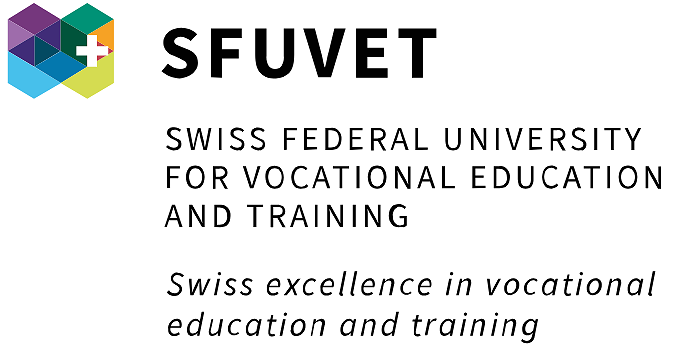Conference Agenda
Overview and details of the sessions of this conference. Please select a date or location to show only sessions at that day or location. Please select a single session for detailed view (with abstracts and downloads if available).
|
Session Overview |
| Session | ||
Paper session 1A: Alternation - "Disabilities and integration measures"
Session Topics: The potential of the different forms of alternation in VET/PET
| ||
| Presentations | ||
The Impact of Visual Impairement on Youth Career Choices 1Université de Lausanne, Switzerland; 2Fondation Asile des aveugles, Lausanne, Suisse Purpose: This study explores the career choice process of visually impaired youths (VIY), focusing on how their disability, social support, and educational access influence their aspirations and choices. Using Amartya Sen's capability approach, the study analyses how functional and contextual constraints impact VIY's freedom to choose and achieve their desired professions. Methods: Fifteen visually impaired youths (aged 16–22) were interviewed using a semi[1]structured guide. Participants were enrolled in secondary or tertiary education in Switzerland and were insured under Swiss disability insurance. Interviews were complemented with quality-of-life assessments using the NEI-VFQ-13 tool. Data was analysed through inductive content analysis and triangulation, comparing objective and subjective visual impairment with career decision-making processes. Results: Four career choice profiles emerged: 1. Free Career, Positive Disability Experience: Youths with minimal constraints and high coping ability freely chose their careers. 2. Constrained Career, Positive Disability Experience: Participants adapted their career goals to their disabilities but remained satisfied with their choices. 3. Free Career, Negative Disability Experience: Youths with mild impairments reported fewer career constraints but struggled with dissatisfaction or indecision. 4. Constrained Career, Negative Disability Experience: Participants felt limited by their impairments, reporting dissatisfaction and forced career compromises. Education level, quality of life, and coping strategies significantly shaped these experiences. Conclusions: VIY face systemic limitations in career choice due to functional, legal, and safety constraints tied to visual impairment. Positive coping strategies and higher education levels enhance career freedom, while negative perceptions of disability and lower educational attainment exacerbate limitations. Social and policy-level support mechanisms must prioritize expanding VIY's capabilities to improve career outcomes and reduce constraints. Young people with disabilities in the world of work – Success factors for a successful training programme: Survey of professional organisations (OdA) University of Teacher Education in Special Needs (HfH), Switzerland Background The inclusion of people with disabilities in the primary labour market is an important socio-political goal (Zemp & Staub, 2022; Sempert & Kammermann, 2011; Biermann & Bonz, 2012). In Switzerland, initial vocational training for adolescents with disabilities often takes place in the sheltered environment. However, in the last few years, more and more vocational training has been offered in companies in the primary labour market, and learners are being accompanied by job coaches in line with the ‘supported training’ model. This approach is considered promising in terms of later vocational inclusion (Campell, 2011; Lulaj, 2023; Hofmann & Schaub, 2016). Research has shown that VET- trainers in particular have a significant influence on the success of the training (Seyd et al., 2007; Nägele & Neuenschwander, 2016; Bosset et al., 2022). Nevertheless the needs of learners, the influencing factors of training have not been sufficiently investigated. Objectives and research questions In this context, the University of Applied Sciences for Special Needs Education (HfH) launched the project ‘Further Development of Inclusive Vocational Training’ with support from the State Secretariat for Education, Research and Innovation (SERI). The aim is to gain more knowledge about the needs of learners and companies in the primary labour market, to identify factors for a successful inclusive training process and to show suitable forms of support. On this basis, concepts for improved inclusion are to be developed in companies provided. In the first step of the project, conditions are examined that are related to the success of training-related measures in the primary labour market. The questions are: How do those responsible in the sectors assess the situation in the companies for learners with impairments? Are there differences depending on the type of impairment and depending on the sector? What are the critical situations in which the VET-trainers reach their limits? How open are the companies to external support and what would be helpful? Methodological approach and sample In order to be able to make a criteria-based selection of sectors for an in-depth analysis of the company situations, the first step was to survey occupational sectors online. The questionnaire comprised questions with predefined answer categories on the topics of challenges in the training of young people with impairments, support structures in the company, use of external support services and perceived need for action to improve integration in the company. A total of 471 associations at the national and regional level in German- and French-speaking Switzerland were contacted. 169 national and regional associations took part in the survey. The response rate was 39.8%. Results/expected results The results of this online-survey are to be presented at the congress. It has been found that, depending on the type of impairment, different challenges are perceived. Often, various support structures are in place that work well; on the other hand, there is also a great need to establish support approaches even more (e.g. use of low-threshold counselling services). Depending on the professional sector, different recommendations for action emerge. Outlook The plan is to select – based on the survey’s results - around 15 companies (in terms of ‘good practice’ or also in sectors that perceive a particularly urgent need). These will then be examined in more detail using qualitative methods. The resulting situation vignettes are intended to highlight challenges for young people with disabilities in various work situations and possible ways of dealing with them. The second part of the project is dedicated to workshops to strengthen training in inclusive settings, based on the findings from the first part. | ||
